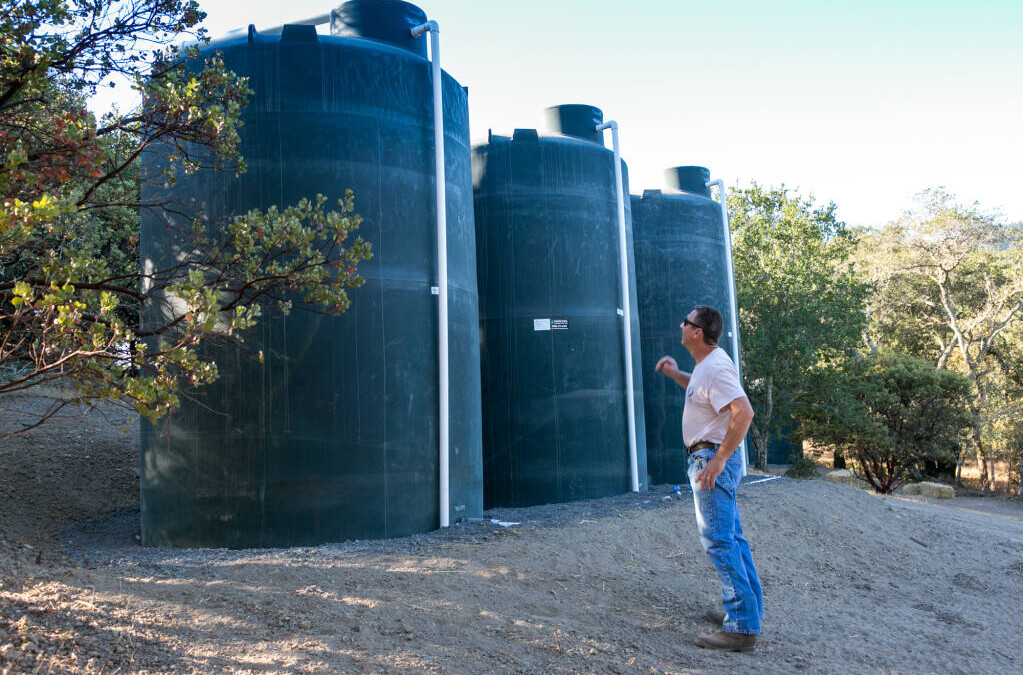By Research Program Manager, Steve Lee, pictured here on his Glen Ellen property with three of the 5,000 gallon tanks designed to capture and hold rainwater. Photo: Sonoma Index Tribune.
Sonoma Creek is a critically important stream for steelhead in the San Francisco Bay. However, insufficient summertime streamflow has been identified as the most important factor limiting salmonid survival and recovery potential in the watershed.
In 2016 researchers from the Sonoma Ecology Center partnered with Trout Unlimited to develop the Sonoma Creek Streamflow Stewardship Program. This initiative, modeled after similar efforts in other California watersheds, is a strategic, science-based approach to study dry season streamflow dynamics in upper Sonoma Creek and then foster stewardship actions cooperatively with streamside landowners to promote water storage and conservation projects which help the landowners meet their water supply needs while also enhancing summer streamflows for the benefit of steelhead and other aquatic species.
Pumping of water directly from streams or from shallow streamside wells has been shown to cause significant late summer streamflow reductions in drought-prone northern California watersheds. Through two years of streamflow monitoring in upper Sonoma Creek we did not find evidence of any large-scale diversions of creek water during the dry season. Local ranchers and vineyard owners have long ago given up on creek pumping in favor of deeper water wells that are more reliable. But numerous, smaller volume rural residential diversions do exist in the upper watershed and our data showed these to be reducing streamflows by up to 50% late in the dry season when overall streamflow was very low. The problem is especially pronounced during heat waves when streamflow is reduced to a trickle or dries up completely in places.
This issue is more important than ever given the near record low rainfall we are experiencing in 2020/2021. All around the watershed seasonal streams have yet to experience flow this wet season due to the lack of precipitation, and the mainstem of Sonoma Creek remains near its lowest annual flow. The outlook for summertime streamflow conditions this year is dismal.
But the solutions are within our reach. Public grant programs are available to help landowners engage in stewardship such as planning for and installing water storage ponds or tanks enabling them collect the water they need during the winter and spring when water is more plentiful, and store it for later use during the dry season. This means less reduction of streamflows during the critical late summer and early fall months when even a small amount of flow can mean the difference between life or death for a young steelhead. Finding ways to slow, spread and sink storm flows is another stewardship approach as is the planning and installation of rainwater harvesting systems. SEC’s own Senior Scientist Steven Lee just completed one such rainwater harvesting project (read the Sonoma IT story) and is happy to report that his entire ~60,000 gallon system is full despite the poor rain year we’ve been having. These and other strategies for water conservation and streamflow augmentation are discussed in our just-released Sonoma Creek Streamflow Stewardship Plan. Learn more.
If you are interested in exploring water conservation and streamflow stewardship possibilities, contact our staff at info@sonomaecologycenter.org.

